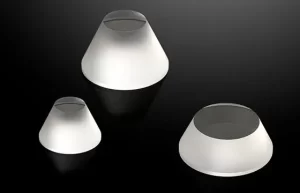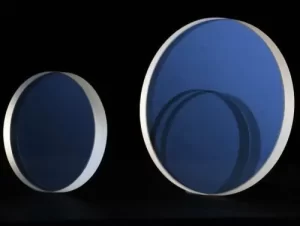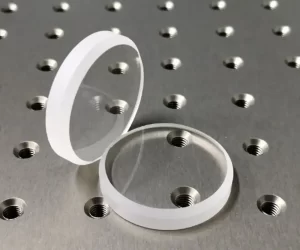The Ultimate Guide to Sapphire Optical Windows
Sapphire optical windows, also commonly referred to as sapphire glass windows, are a crucial component in a wide range of industrial, scientific, and high-precision applications. Known for their exceptional hardness, chemical resistance, and optical clarity, sapphire windows offer unmatched durability and performance compared to conventional glass or other optical materials. In this comprehensive guide, we will explore the different types of sapphire windows, their properties, applications, pricing, and how to choose the right sapphire optical window for your needs.

1. What is a Sapphire Optical Window?
A sapphire optical window is a flat, polished piece of synthetic or natural sapphire that serves as a transparent barrier in optical and mechanical systems. It allows light to pass through while protecting sensitive components from dust, moisture, chemical exposure, and physical impact.
Sapphire, also known as window sapphire, is a single-crystal aluminum oxide (Al₂O₃) material renowned for its hardness, second only to diamond, and its high transmission range across ultraviolet (UV), visible, and infrared (IR) wavelengths. The combination of hardness, optical clarity, and chemical stability makes sapphire windows ideal for applications ranging from laser systems to aerospace, defense, and high-end electronics.

2. Key Properties of Sapphire Windows
Understanding the properties of sapphire windows is essential for selecting the right component for your application:
2.1 Optical Transmission
Sapphire windows have excellent optical transparency from approximately 150 nm to 5.5 µm. This broad sapphire window transmission range makes them suitable for UV, visible, and IR applications. Additionally, some sapphire windows are offered with AR-coated windows to reduce reflection losses and improve transmission efficiency.
2.2 Hardness and Durability
With a Mohs hardness of 9, sapphire is extremely scratch-resistant, making it an ideal material for harsh industrial environments. Large sapphire windows maintain this durability even at significant thicknesses, offering reliable protection for sensitive instruments.
2.3 Thermal and Chemical Resistance
Sapphire windows withstand temperatures exceeding 2000°C and resist most chemicals, including acids and alkalis. This makes them suitable for industrial processing, chemical monitoring, and high-temperature laser systems.
2.4 Mechanical Strength
Sapphire’s high tensile strength ensures that custom sapphire windows can be used in high-pressure environments, such as vacuum systems, aerospace equipment, and scientific instruments.
3. Types of Sapphire Windows
Manufacturers offer sapphire windows in a variety of types to meet specific application requirements:
3.1 Synthetic Sapphire Windows
Most modern sapphire windows are synthetic sapphire windows, grown in laboratories using methods like the Kyropoulos or Czochralski techniques. These provide consistent optical and mechanical properties while allowing customization in size and shape.
3.2 AR-Coated Sapphire Windows
Anti-reflective coatings improve transmission and reduce glare, making AR-coated windows ideal for optical instruments, laser systems, and high-performance sensors.
3.3 Large Sapphire Windows
For applications requiring extensive viewing or high optical throughput, large sapphire windows are available, often used in high-end instrumentation, aerospace, and chemical reactors.
3.4 Custom Sapphire Windows
Many manufacturers offer custom sapphire windows to meet unique size, thickness, shape, or coating requirements. Round, square, or step windows are possible, allowing integration into complex systems.

4. Applications of Sapphire Optical Windows
The versatility of sapphire windows allows them to be applied across multiple industries:
4.1 Industrial and Scientific Applications
-
Laser systems: Protect delicate optics while maintaining high transmission.
-
Spectroscopy: Transparent over UV, visible, and IR ranges for accurate measurements.
-
High-pressure vessels: Sapphire windows withstand extreme mechanical stress.
4.2 Aerospace and Defense
-
Observation ports in aircraft and spacecraft.
-
Sensor covers exposed to high altitude, vibration, and temperature extremes.
4.3 Electronics and Semiconductors
-
Device protection in high-temperature electronics.
-
Transparent barrier for optoelectronic devices and sensors.
4.4 Jewelry and Watches
Sapphire windows are used in luxury watches and instruments for scratch-resistant transparent surfaces.
4.5 Custom Industrial Designs
-
Chemical processing equipment: Resist corrosion and chemical attack.
-
Optical instrumentation: Step windows and non-standard shapes for specific optical paths.
5. Buying Guide: Sapphire Window Price and Selection
When purchasing sapphire windows, several factors influence the sapphire window price:
-
Size and Thickness: Larger and thicker windows are more expensive due to increased material costs and manufacturing difficulty.
-
Optical Quality: High-precision and high-transmission windows carry premium pricing.
-
Coatings: AR-coated sapphire windows cost more but improve optical performance.
-
Customization: Custom shapes, step windows, and precision tolerances increase production costs.
It is important to balance price and performance requirements when selecting sapphire optical windows. For standard applications, stock windows from suppliers like Edmund Optics, Thorlabs, and Newport may provide cost-effective solutions. For specialized or high-precision systems, custom sapphire windows are recommended.
6. Comparison of Sapphire Windows vs. Other Optical Materials
| Feature | Sapphire Windows | Standard Glass | Quartz |
|---|---|---|---|
| Hardness | 9 Mohs | 5-6 Mohs | 7 Mohs |
| Chemical Resistance | Excellent | Moderate | Good |
| Transmission Range | 150 nm – 5.5 µm | 350 nm – 2.5 µm | 180 nm – 3.5 µm |
| Thermal Resistance | >2000°C | 500°C | 1200°C |
Sapphire windows clearly outperform standard glass in durability, optical range, and thermal stability, making them the material of choice for demanding applications.
7. How to Maintain Sapphire Windows
-
Cleaning: Use mild solvents or isopropyl alcohol; avoid abrasive materials.
-
Handling: Always use gloves to prevent fingerprints and smudges.
-
Storage: Store in protective containers to avoid scratches and dust accumulation.
Proper maintenance ensures long-term optical performance and prevents costly replacements.
8. Future Trends in Sapphire Windows
-
Larger Windows: Industrial and aerospace demand for large sapphire windows is growing.
-
Advanced Coatings: Improved AR coatings and multi-layer coatings enhance transmission and reduce reflection.
-
Custom Designs: Tailored custom sapphire windows for specialized scientific instruments are becoming more common.
-
Electronics Integration: Increasing use of sapphire in electronic and optoelectronic devices.
Conclusion
Sapphire optical windows are an indispensable component in modern optical, industrial, and scientific systems. Their unmatched hardness, chemical resistance, thermal stability, and broad transmission range make them superior to conventional glass. Whether you need sapphire windows and doors for industrial systems, sapphire glass windows for electronics, or custom sapphire windows for laser instruments, understanding the material properties, types, and applications is crucial.
By carefully selecting the right sapphire optical window, considering AR coatings, size, thickness, and material quality, you can ensure reliable performance and longevity for your systems. With ongoing technological advancements, sapphire windows will continue to play a key role in precision optics, industrial applications, and high-performance engineering.
Sapphire windows sometimes is for medical use.
We also have medical furnitures for your needs.